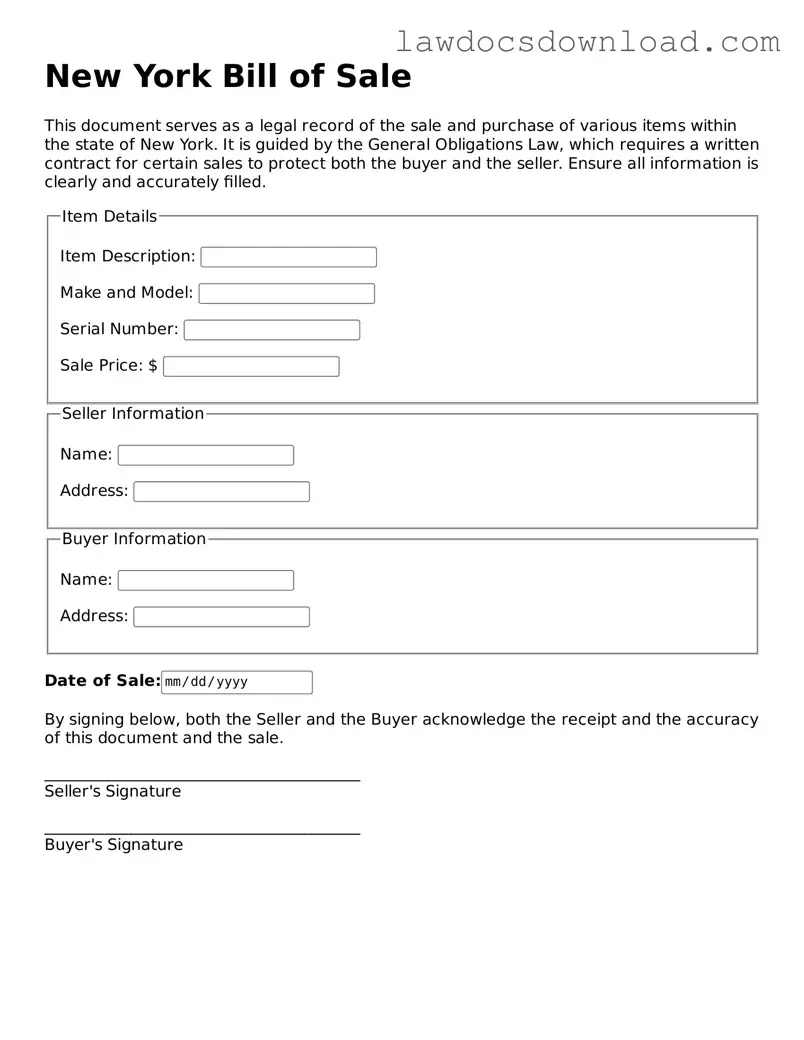The New York Bill of Sale form is similar to a Warranty Deed in that both provide evidence of a transaction where property changes hand. However, while a Bill of Sale is used primarily for the sale of personal property such as vehicles or equipment, a Warranty Deed is employed in real estate transactions. Both documents affirm the seller's right to transfer ownership and assure the buyer of receiving the title free from liens or claims.
Comparable to a Sales Agreement, the Bill of Sale serves as proof of a completed transaction but is more concise. A Sales Agreement outlines the terms of a sale in detail, including price, delivery arrangements, and warranties before the actual exchange takes place. In contrast, a Bill of Sale is used to confirm that a sale has occurred and to transfer ownership from seller to buyer.
A Promissory Note shares similarities with a Bill of Sale as it evidences an agreement involving valuable assets. However, while a Bill of Sale documents the immediate transfer of ownership for a one-time payment, a Promissory Note details the borrower's promise to repay a sum of money to the lender over a period, often with interest, making it more applicable to loans and financing agreements.
The Bill of Sale and Receipt share the primary function of documenting that a transaction has taken place. Both serve as proof of payment and transfer of ownership. The key difference lies in their specificity and formality. A Bill of Sale usually contains more details about the item sold and may require notarization, whereas a Receipt is a simpler acknowledgment of payment received.
A Title is deeply related to a Bill of Sale in that it represents actual ownership of an asset, such as a car or boat. While the Bill of Sale is the legal document that facilitates the transfer of this ownership from one party to another, the Title is what officially denotes the new owner's rights to the property. In many cases, a Bill of Sale is necessary to update or obtain a new Title.
A Lease Agreement, while used for different purposes, shares the aspect of transferring rights like the Bill of Sale. However, instead of transferring ownership of an item, a Lease Agreement transfers the right to use a property or item for a specific period in exchange for payment. Thus, the Bill of Sale transfers ownership permanently, while a Lease offers temporary use rights.
The Quitclaim Deed, like the Bill of Sale, is used to transfer interest in property but differs in its guarantee. The Quitclaim Deed transfers the owner's interests in real property without any warranties regarding the title's validity. Contrary to this, a Bill of Sale used for personal property can come with or without warranties, depending on whether it's a general or specific form.
Finally, an Assignment Agreement is akin to a Bill of Sale because it involves the transfer of rights or interests from one party to another. This can relate to various assets, including intellectual property or contractual rights. Whereas a Bill of Sale is specific to the transfer of ownership for tangible assets, an Assignment Agreement can encompass a broader range of property, including rights and obligations under a contract.
